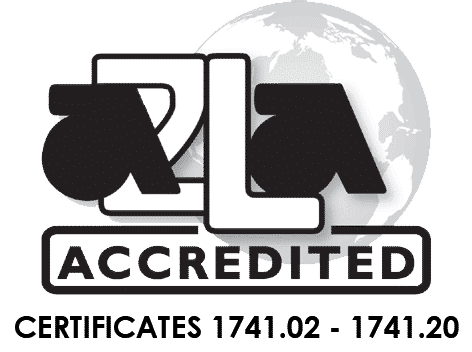Industrial Terminology Glossary – I
I/O (Input/Output)
Describes programs, systems, or devices which communicate with a computer. Each communication signal is an output from one device and an input at the other device.
Ice Point
Obsolete term in thermometry, the temperature of a mixture of melting ice and water at normal atmospheric pressure, defined as 0°C (32°F, 273.2°K) now replaced in lPTS-68 by the triple point of water to which the temperature of +0.0100°C has been assigned.
Immersion Depth
That length of a temperature probe, which is exposed to the temperature to be measured.
The overall resistance that electric current encounters within an alternating current (AC) circuit. Read More…
A tool for gauging the angular displacement of an object from the horizontal plane. Read More…
A sophisticated machine engineered to create and sustain a precisely controlled environment, facilitating the optimal growth and development of various organisms and substances. Read More…
Inductive Reactance
The force which acts as a resistance in an inductor to limit the flow of current. This force creates a leading power factor in AC circuits.
Infrared Thermometer (IR Thermometer)
An infrared thermometer, commonly known as an IR thermometer, is a valuable tool for contactless temperature measurement. Read More…
Input Resistance
Sometimes called “leakage resistance” the resistance measured between specified insulated portions of a temperature transducer when a specified DC voltage is applied. If insulation resistance should get very low, i.e., below 0.5 megaohms, errors may result due to shunting of an RTD.
Instability
Unpredictable, not stable or consistent.
Insulation Resistance
The electrical resistance value of a material used to insulate one conductor from another.
Interface
A device or program which allows a user to interact with a computer or other electronic device.
International Electrotechnical Commission (IEC)
An organization which provides International Standards and Conformity Assessment Services that ensure the safety, efficiency, reliability and interoperability of electrical, electronic and information technologies.
International Laboratory Accreditation Cooperation (ILAC)
The primary purpose of ILAC is to establish an international arrangement between member accreditation bodies based on peer evaluation and mutual acceptance. ILAC is the principal international co-operation for developing and harmonizing laboratory and inspection body accreditation practices; Recognizing accredited calibration laboratories, testing laboratories, medical testing laboratories and inspection bodies internationally under the ILAC MRA; Promoting laboratory and inspection body accreditation to industry, governments, regulators and consumers; and assisting and supporting developing accreditation systems.
International Maritime Organization (IMO)
The United Nations specialized agency with responsibility for the safety and security of shipping and the prevention of marine and atmospheric pollution by ships.
International Organization for Standardization (ISO)
ISO develops high quality voluntary International Standards which facilitate international exchange of goods and services, support sustainable and equitable economic growth, promote innovation and protect health, safety and the environment.
International Organization of Legal Metrology (OIML)
Based in Paris, the mission of the OIML is to enable economies to put in place effective legal metrology infrastructures that are mutually compatible and internationally recognized, for all areas for which governments take responsibility, such as those which facilitate trade, establish mutual confidence and harmonize the level of consumer protection worldwide.
Ingress Protection (IP) Rating
IP ratings are defined in international standard EN 60529 (British BS EN 60529:1992, European IEC 60509:1989). They are used to define levels of sealing effectiveness of electrical enclosures against intrusion from foreign bodies (tools, dirt etc) and moisture.
Intrinsic Safety Barrier
Components of an intrinsically safe application which limit current, voltage, & total energy delivered to a sensor or any other actuator instrument located in a hazardous area.
Intrinsically Safe Circuit
A circuit which is less hazardous and has less potential for ignition. There are several considerations in designing intrinsically safe electronics devices: reducing or eliminating internal sparking, controlling component temperatures, and eliminating component spacing that would allow dust to short a circuit. Elimination of spark potential within components is accomplished by limiting the available energy in any given circuit and the system as a whole.
Intrinsically Safe System
The primary concept behind intrinsic safety systems is the restriction of available electrical and thermal energy in the system so that ignition of a hazardous atmosphere (explosive gas or dust) cannot occur. This is achieved by ensuring that only low voltages and currents enter the hazardous area, and that no significant energy storage is possible.
International Practical Temperature Scale of 1968 (IPTS-68)
Scale from -260C to 630 C that is the calibration standard for temperature measurements. The International temperature scale (ITS) is a combination of established numerical values of reference points, interpolation dependencies and techniques which ensure the unity of temperature measurements. ITPS-68 defines the the low temperature range down to the triple point of hydrogen of 13.81 K (−253.34°C) using 13 main reference points.
International Practical Temperature Scale of 1990 (IPTS-90)
Scale from -272C to 1084 C that is the calibration standard for temperature measurements. The International Temperature Scale of 1990 (ITS–90) published by the Consultative Committee for Thermometry (CCT) of the International Committee for Weights and Measures (CIPM) is an equipment calibration standard for making measurements on the Kelvin and Celsius temperature scales.
Isothermal
An isothermal process is a change of a system in which the temperature remains constant.
ISO/IEC 17025, a globally recognized standard, sets the criteria for assessing testing and calibration labs’ competence. Read More…

